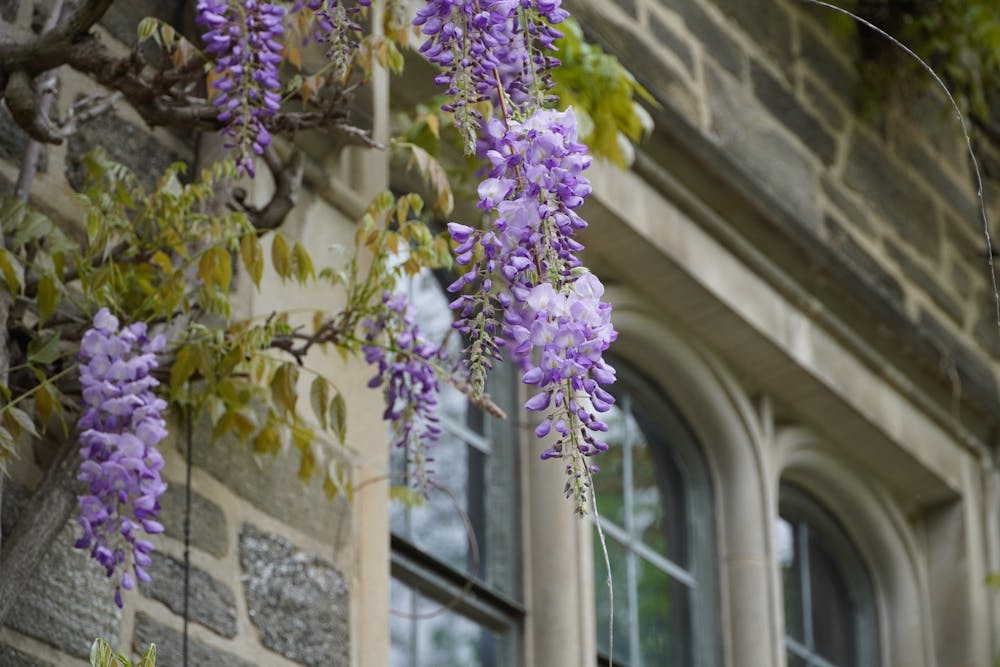Content Warning: The following article contains discussion of death and suicide.
University Counseling Services are available at 609-258-3141, and the Suicide Prevention Lifeline is available 24/7 at 988. A Crisis Text Line is also available in the United States; text HOME to 741741. Students can contact residential college staff and the Office of Religious Life for other support and resources. For employees, Carebridge counseling services are available 24/7 by calling (800) 437-0911.
“The most humble person I’ve ever met.” “Simmering with energy and curiosity.” “Bright, witty, dedicated, empathetic, and compassionate.”
These are the ways that the people who were closest to those in the Princeton community who tragically took their own lives remember them. Over the last two years, at least three students and one staff member have died following mental health struggles, an incalculable loss for the University.
These tragedies have fallen disproportionately on students of color. In addition, suicides have been clustered around times of high academic stress. The ‘Prince’ looked back at a tragic decade for Princeton.
Deaths have become more common at Princeton over the last ten years. A Dec. 3, 2015 article by the ‘Prince’ reported that “there have been 24 undergraduates, seven graduates, seven professors and four staff members who have died by suicide at the University that have been reported in The Daily Princetonian since 1876.” Since the article’s publication, six undergraduates have taken their own lives. Additionally, faculty and staff have also died by suicide since then.
Over 19 percent of total Princeton student suicides reported since 1876 have occurred in the last 10 years. For undergraduates alone, the difference is even starker: 25 percent of undergraduates who have died by suicide since 1876 have done so since 2013.

Two of the eight student suicides that occurred in the past 10 years took place during the month of January. Until 2020, fall term final exams took place during January; both of the deaths that took place during January happened before 2020. Two deaths occurred in May, in which spring term final examinations take place.
According to the Director of Counseling and Psychological Services (CPS), Calvin Chin, CPS “tailor[s] our services to anticipate times of higher demand by bolstering the staff with additional counselors and partnering with other offices and departments in promoting mental health services. For example, our engagement specialists in UMatter develop targeted social media posts to reflect what might be most stressful for students at any given time (e.g., bicker, midterms, deans (sic) date) and share helpful health information and resources in these posts.”
Over half of all students who took their own lives in the past 10 years have been juniors at the time of their passing.
Every student who has died by suicide in the past ten years has been a person of color. There have been calls by students and organizations such as Princeton Ethiopian and Eritrean Student Association (PEESA) to diversify CPS counseling.

In a past interview with the ‘Prince,’ PEESA co-president Joachim Ambaw ’24 stated that “some Black students can’t find therapists within CPS that are able to relate to them,” and that “finding somebody that they can relate to on an identity level can lead to better interactions and a better therapy process.”
According to Chin, “40 percent of [CPS] counselors identify as BIPOC and 35 percent identify as members of the LGBTQ community.” Chin states that CPS takes care to “prioritize diversity in … hiring” so that “all students are comfortable accessing services.”
According to W. Rochelle Calhoun, the Vice President for Campus Life, in a statement to the ‘Prince,’ the University “recognize[s] that particular populations or groups of students may be especially vulnerable [to suicide]. The impacts of racism, homophobia, and transphobia in our society are real.”
Calhoun also highlighted “multiculturally competent” mental health resources on campus, such as “a series of mental health programs and workshops co-sponsored by CPS and the Asian American Student Alliance (AASA) in the fall, a retreat co-sponsored by the Office of the Dean of Undergraduate Students (ODUS) and Our Health Matters emphasizing the health and wellbeing needs of Black women over winter break, and a series of workshops and programs facilitated by one of our TigerWell Outreach counselors, who frequently assists BIPOC and LGBTQIA students, done in partnership with SIFP and the GSRC.”
University counseling programs have become more popular over time.
The percentage of students who have considered pursuing any form of mental health counseling or therapy has increased from 75.0 percent to 78.5 percent in the Class of 2022 and Class of 2023, respectively. Similarly, 64.6 percent of members of the Class of 2023 have had counseling, whether inside or outside of CPS: a 7.8 percent increase from the 59.9 percent reported for the Class of 2022.
“We recognize that there is always more work to be done in ensuring a safe and inclusive environment for all students and are committed to continuing to move this work forward,” said Calhoun in her statement.
Elaine Huang is a head Data editor for the ‘Prince.’
Suthi Navaratnam-Tomayko is an assistant Data editor for the ‘Prince.’
Please direct all corrections requests to corrections[at]dailyprincetonian.com.
Correction: This piece has been updated to clarify the circumstances of multiple student deaths. The ‘Prince’ regrets these errors.








